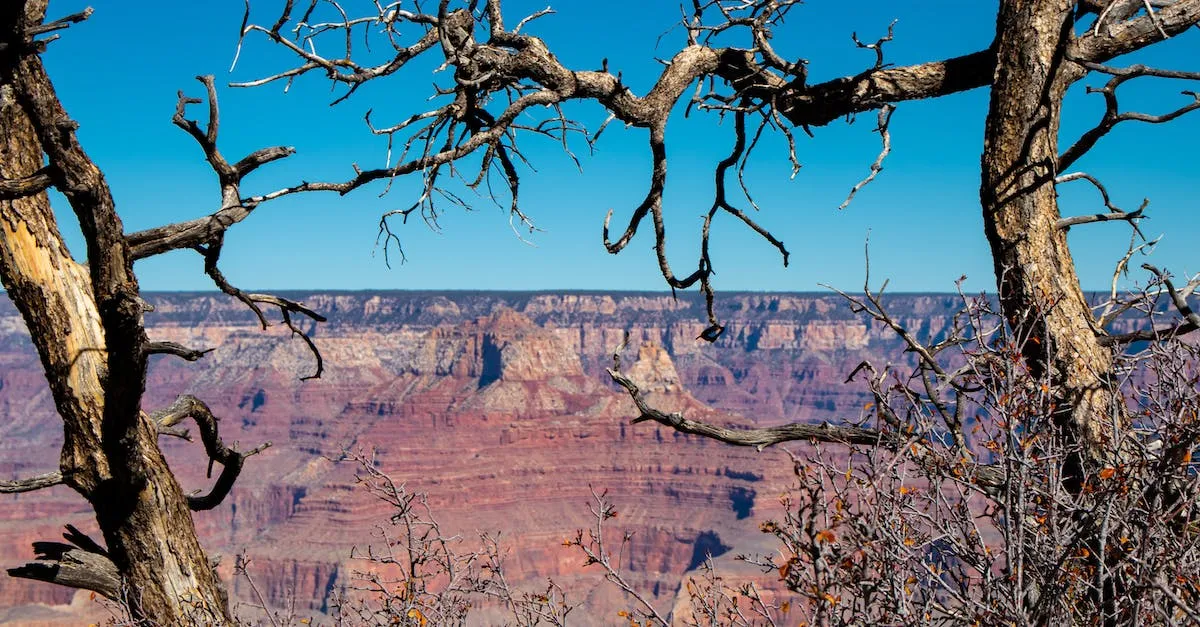Colorado Vs Arizona: A Detailed Comparison Of Living In The Two States
With their beautiful scenery, sunny weather, and abundance of outdoor activities, both Colorado and Arizona are attractive places to live in the American West. But if you’re trying to choose between the two states, how do you decide? What are the differences in climate, lifestyle, cost of living and more?
If you’re short on time, here’s a quick answer: Colorado generally has a cooler climate, more seasonal weather patterns and more mountainous terrain while Arizona is hot and dry, with more desert landscapes. Colorado may be a better choice for outdoor enthusiasts.
In this comprehensive comparison guide, we’ll analyze key factors like climate, geography, cost of living, economy, tax rates, education and more to help you determine whether Colorado or Arizona is a better fit for your needs.
Comparing the Climate and Geography
Colorado’s Cooler Temperatures and Seasonal Variation
Colorado is known for its cooler temperatures and diverse seasonal variation. The state experiences cold winters with snowfall, making it a paradise for winter sports enthusiasts. The summers are mild and pleasant, with temperatures averaging around 80°F (27°C).
The Rocky Mountains dominate the landscape, offering breathtaking views and numerous outdoor recreational opportunities. Colorado’s high elevation also means lower oxygen levels, which can take some getting used to for newcomers.
Arizona’s Hot, Dry Climate and Desert Landscape
On the other hand, Arizona boasts a hot and dry climate, particularly in the summer months. Temperatures often exceed 100°F (38°C), making it one of the hottest states in the country. The lack of humidity, however, can make the heat more bearable compared to more humid regions.
Arizona’s landscape is characterized by desert areas, including the iconic Sonoran Desert, which is home to unique flora and fauna. The state also offers stunning natural wonders like the Grand Canyon.
Mountain Ranges vs. Canyons and Mesas
Colorado’s geography is dominated by the Rocky Mountains, which provide ample opportunities for hiking, skiing, and other mountain activities. The state is also home to numerous lakes, rivers, and forests, offering a diverse range of outdoor experiences.
Arizona, on the other hand, is known for its impressive canyons, such as the Grand Canyon and the Antelope Canyon. The state also features mesas and buttes, adding to its unique and striking landscape.
Impacts on Lifestyle and Outdoor Activities
The different climates and geographical features of Colorado and Arizona have a significant impact on the lifestyle and outdoor activities available in each state. In Colorado, residents have easy access to skiing, snowboarding, and other winter sports during the colder months.
The summer months offer opportunities for hiking, camping, and fishing in the mountains and lakes. Arizona, with its arid climate, is more conducive to outdoor activities like hiking, rock climbing, and exploring the desert landscape.
The state also attracts golf enthusiasts with its numerous golf courses.
Whether you prefer the cooler temperatures and mountainous terrain of Colorado or the hot, dry climate and desert landscapes of Arizona, both states offer unique experiences and a wide array of outdoor activities for residents and visitors alike.
Cost of Living and Economic Comparison
Housing Costs in Major Cities
When comparing the cost of living between Colorado and Arizona, one of the most significant factors to consider is housing costs, especially in major cities.
In Colorado, cities such as Denver and Boulder have seen a surge in housing prices in recent years. The median home price in Denver is around $450,000, while in Boulder, it is even higher at $600,000. These prices reflect the strong demand for housing in these areas due to their thriving economies and desirable lifestyle.
On the other hand, Arizona offers more affordable housing options. In Phoenix, the median home price is around $300,000, making it a more budget-friendly choice for those looking to buy a home. Tucson, another major city in Arizona, has an even lower median home price of around $210,000.
It is important to note that these figures are subject to change and can vary depending on the specific neighborhood and housing market conditions.
Transportation Expenses
When it comes to transportation expenses, both Colorado and Arizona offer various options for commuting within and between cities.
In Colorado, the state has a reliable public transportation system, particularly in Denver, with a well-connected light rail and bus network. The cost of public transportation in Colorado varies depending on the distance traveled, but a monthly pass in Denver can range from $80 to $200.
In Arizona, cities like Phoenix and Tucson also have public transportation systems, including buses and light rail. The cost of public transportation in Phoenix is comparable to Denver, with a monthly pass ranging from $64 to $200.
However, it is worth noting that both states heavily rely on personal vehicles, and the cost of owning a car, including gas, insurance, and maintenance, should be considered when comparing transportation expenses.
Food, Utilities, and Other Costs
Aside from housing and transportation, it is essential to consider other costs of living, such as food, utilities, and general expenses.
In terms of grocery prices, both Colorado and Arizona have a similar range. The cost of groceries can vary depending on where you shop, but on average, a gallon of milk in both states is around $2.50, a loaf of bread is around $2, and a dozen eggs is around $2.50.
Utility costs, including electricity, heating, and water, can also vary. On average, monthly utility bills in Colorado range from $100 to $200, while in Arizona, they range from $80 to $150.
Other general expenses, such as dining out, entertainment, and healthcare, can also differ in each state and depend on personal preferences and lifestyle choices.
Job Opportunities and Economic Outlook
When considering the cost of living, it is crucial to evaluate job opportunities and the economic outlook of each state.
Colorado has a robust and diverse economy, driven by industries such as technology, aerospace, healthcare, and renewable energy. The state has a low unemployment rate of around 3%, indicating a relatively healthy job market.
Arizona also offers a range of job opportunities, particularly in industries like healthcare, tourism, and manufacturing. The state’s unemployment rate is slightly higher than Colorado, at around 4%, but still within a reasonable range.
Both states have experienced steady economic growth in recent years, attracting businesses and professionals looking for new opportunities.
For more detailed information on job opportunities and the economic outlook in both Colorado and Arizona, you can visit Colorado.gov and AZCommerce.com.
Education Systems and Demographics
Public Schools Analysis and Ratings
When comparing the education systems in Colorado and Arizona, it is important to consider the quality of public schools. Both states have made efforts to improve their educational systems, but there are notable differences.
According to the GreatSchools rating system, Colorado has a higher average rating for its public schools compared to Arizona. This rating is based on factors such as test scores, graduation rates, and student-to-teacher ratios.
However, it is worth noting that there are exceptional schools in both states, and it ultimately depends on the specific school district and individual needs.
Higher Education Options
In terms of higher education, both Colorado and Arizona offer a range of options for students. Colorado is home to prestigious universities such as the University of Colorado Boulder and Colorado State University.
On the other hand, Arizona boasts renowned institutions like Arizona State University and the University of Arizona. These universities offer a variety of academic programs and have a strong reputation for research and innovation.
Additionally, both states have community colleges and technical schools that provide vocational training and associate degree programs.
Breakdown of State Population and Diversity
When considering the demographics of Colorado and Arizona, there are some notable differences. Colorado has a larger population compared to Arizona, with an estimated population of over 5.7 million people as of 2021, while Arizona has a population of around 7.3 million people.
In terms of diversity, both states have a mix of ethnicities and cultures. According to the U.S. Census Bureau, Colorado has a higher percentage of White and Hispanic residents, while Arizona has a larger Native American population.
Additionally, both states have growing Asian and African American communities.
Taxes, Crime Rates and Other Quality of Life Factors
State and Local Tax Burden
When it comes to taxes, both Colorado and Arizona have their own unique systems. Colorado has a flat income tax rate of 4.63%, which applies to all income levels. On the other hand, Arizona has a progressive income tax system, with rates ranging from 2.59% to 4.5% depending on income.
When considering property taxes, Colorado has a lower average effective property tax rate compared to Arizona. In Colorado, the average effective property tax rate is 0.52% of the property’s assessed value, while in Arizona, it is 0.73%.
It’s important to note that tax rates can vary depending on the specific county or city within each state. For more detailed and up-to-date information on tax rates in Colorado, you can visit the Colorado Department of Revenue website, and for Arizona, you can visit the Arizona Department of Revenue website.
Crime Statistics in Major Cities
When comparing crime rates in major cities, both Colorado and Arizona have cities with varying levels of safety. In Colorado, cities like Denver and Colorado Springs have higher crime rates compared to the state average, while cities like Boulder and Fort Collins have lower crime rates.
Similarly, in Arizona, cities like Phoenix and Tucson have higher crime rates, while cities like Scottsdale and Gilbert have lower crime rates.
It’s important to note that crime rates can fluctuate over time, and it’s always a good idea to research specific cities or neighborhoods before making a decision. Websites like NeighborhoodScout provide detailed crime statistics and information for various cities across the United States.
Access to Healthcare and Amenities
Both Colorado and Arizona offer a wide range of healthcare options and amenities for their residents. Colorado is known for its excellent healthcare facilities, with renowned hospitals such as the University of Colorado Hospital and Children’s Hospital Colorado.
Arizona also has a strong healthcare system, with notable hospitals like the Mayo Clinic Hospital in Phoenix and the Banner – University Medical Center in Tucson.
When it comes to amenities, both states offer a variety of recreational activities and natural attractions. Colorado is famous for its stunning Rocky Mountains, which provide ample opportunities for hiking, skiing, and other outdoor activities.
Arizona, on the other hand, is known for its beautiful deserts, including the iconic Grand Canyon.
Whether you prefer a bustling city with access to cultural amenities or a quieter, nature-filled lifestyle, both Colorado and Arizona have something to offer.
Conclusion
Determining whether Colorado or Arizona is a preferable place to live depends greatly on your climate preferences, career needs, lifestyle priorities and more. While the beautiful mountain landscapes of Colorado attract many, Arizona’s warm winters and abundance of golf courses and retirement communities are also enticing. Carefully weighing factors like cost of living, taxes, climate, amenities and more can help guide your decision of whether magnificent Colorado or sunny Arizona is a better fit.








